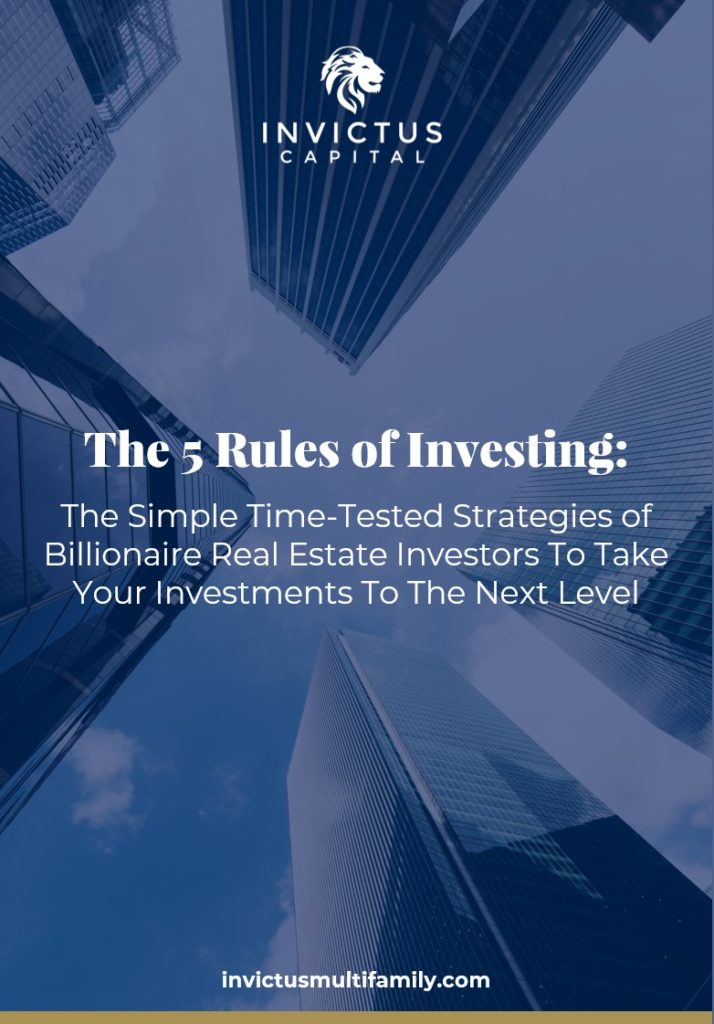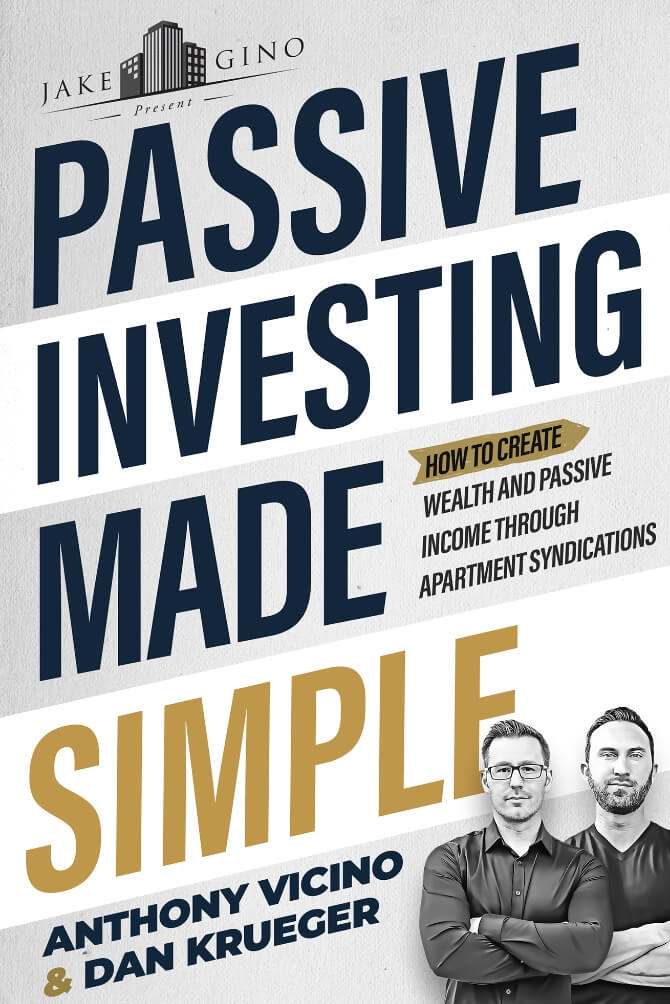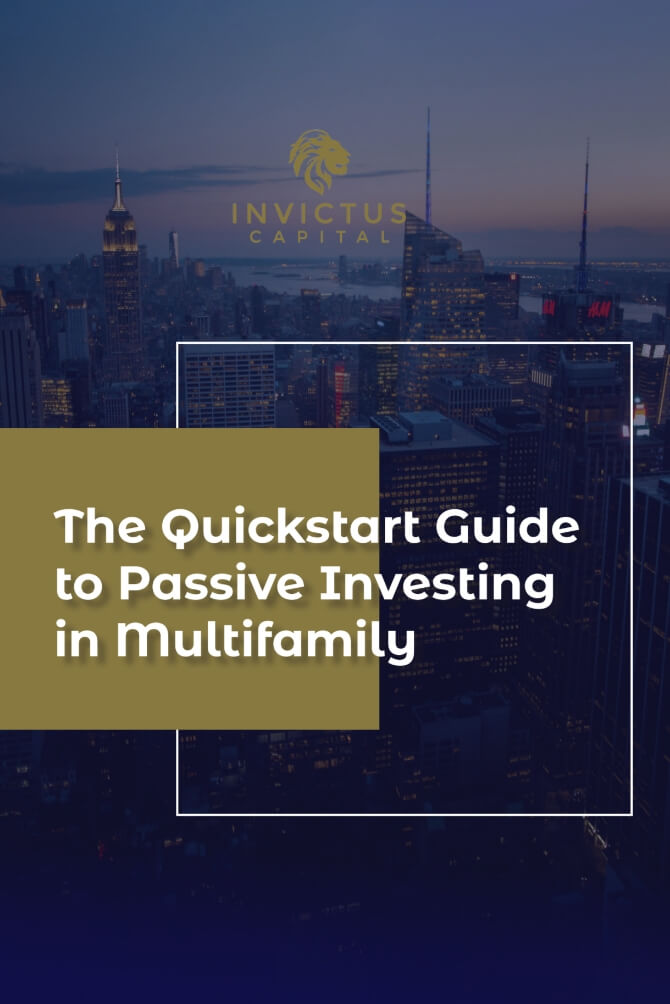“Cash on Cash Return is just the annualized returns relative to the initial amount invested and honestly this is one of the simplest return metrics that real estate investors use.”
We’re back with another episode of the always quick-hitting Multifamily Investing Made Simple in UNDER 10 Minutes. This week we’re sprinting through one of the most commonly used metrics investors use to analyze a potential deal.
It’s simple, but that doesn’t mean unimportant. Let’s dive in and learn how to calculate your CoC return and when you should care about this metric versus all the rest. Link to the full episode in the comments! P.S. Are you digging these quick hitter episodes?
If so, do us a favor and leave some love in the form of a rating and review. Your feedback means the world to us!
“It’s simpler, and we’re drawn to what’s familiar, but that doesn’t mean it’s the right metrics.” – Anthony Vicino
LEAVE A REVIEW if you liked this episode!!
Keep up with the podcast! Follow us on Apple, Stitcher, Google, and other podcast streaming platforms.
To learn more, visit us at: https://invictusmultifamily.com
**Want to learn more about investing with us?**
We’d love to learn more about you and your investment goals. Please fill out this form and let’s schedule a call: https://invictusmultifamily.com contact/
**Let’s Connect On Social Media!**
LinkedIn: https://www.linkedin.com/company/11681388/admin/
Facebook: https://www.facebook.com/invictuscapitalventures/
YouTube: https://bit.ly/2Lc0ctX

Dan Krueger (00:00):
Welcome to multi-family investing made simple in under 10 minutes. I am Dan Krueger and as always, I’m joined by my partner in crime, Anthony Vicino. And to date in under 10 minutes, actually probably under seven minutes, we are going to dive into cash on cash return and give you a very comprehensive understanding of this metric. So when you’re looking at deals, you know, what the heck the cash on cash return is? So without further ado, Anthony, what is the cash on cash return?
Anthony Vicino (00:42):
That’s a great question, Dan. I’m glad you asked because I’m prepared to answer. CoC return is just the annualized returns relative to the initial amount invested. And honestly, this is one of the simplest return metrics that real estate investors use. And in my estimation, people overemphasize the importance of it. And we’ll talk a little bit why, why we think that is it’s not the most important metric by a long shot, but it can be a really good snapshot to give you an understanding of just how much money your money is earning throughout a deal. So let’s take an example. If you invested a hundred thousand in a deal that paid out an annual distribution of $10,000, then your cash on cash return is 10% super simple.
Dan Krueger (01:21):
The reason why most people emphasize this one so much, isn’t because I think it’s important, but it’s probably the one they’re the most comfortable with. And they’ve probably seen on brokerage statements or even savings accounts. This whole rate of return is something that people are fairly comfortable with. So when they are newer to investing, they open up an offer and memorandum and they see that they’re like, Ooh, I know that one I’ve seen this before and savings accounts on, you know, if my stock goes up 5%, like I get that, the other stuff, IRR equity, multiple, those things might be a little bit foreign to me, but CoC return. I think I can get that
Anthony Vicino (01:56):
It’s simpler and we’re drawn to what’s familiar. And, but that doesn’t mean it’s the right metric specifically when we’re talking in, looking at multi-family properties and assets, because honestly the cash on cash is one of the least important and those deal structures, I find people really emphasize them quite a bit. You had a really good point about when you receive back portions of your investment, do you want to, you want to kind of break that down.
Dan Krueger (02:22):
So even though the cash on cash return in itself is fairly simple and probably intuitive for a lot of people, there’s a nuance to this metric when you’re looking at syndication deals in particular where there’s the opportunity for capital events prior to the actual sale of the asset, taking place specifically a refinance, which we like to do because we buy properties that have upside potential. So as soon as we execute our business plan and create that value, when these properties we’d like to go in and extract some of that new equity, we created via a cash out refinance. So if you’re an investor in this happens let’s say you put a hundred thousand dollars into a deal in year two, there’s a cash out refinance. And your portion of that refinance is $50,000. All of a sudden, you’ve got a half your money back, which means a half, your risk is taken off the table.
Dan Krueger (03:10):
So from that point forward, your CoC return is going to be however much your distribution is for a period divided by how much money is left in the deal in this case of $50,000. So in Anthony’s example where the distributions were $10,000 on that example if that investor got a $50,000 refinance, you get your cash back from the refinance. So if that happens and they’ve also only got $50,000 left in the deal going forward, if they’re still getting $10,000 distributions, all of a sudden their cash on cash return has doubled because $10,000 divided by $50,000 is actually 20% now. So if you ever see those kinds of nuances pop up like that, cash and cash return jumps up after something mid, mid-stream, that might be the case. But really you just want to make sure that you’re not just looking at how much you’ve put in. Initially you look at your return relative to how much money is actually in the deal today. Now cash flow distributions, just too kind of clarify, before we wrap this up, those don’t reduce your, your money in the deal. So those quarterly profits that are the result of normal business operating, you know, that’s not going to draw down your capital account. It’s a capital event, either a sale or a refinance. That’s going to quote unquote, take money off the table for you, or take risk off the table.
Anthony Vicino (04:25):
And that can actually vary depending on how the operator structured. Their deal can be a return of capital or return on capital. Typically in these cases, we see mostly of capital. It’s a slight nuance that changes things a little bit, but the point there is the reason why I’m not a big fan of the cash on cash for evaluating a multifamily deal is because it can be so drastically skewed based off of a capital event, midstream that now the number becomes very meaningless. If we look at the life of a project with a cash out refinance in year two or three, it might have like a 20% annual cash on cash return, which is just, it doesn’t tell you anything by comparison to more sophisticated metrics like the IRR. And so I tend to devalue the cash on cash. It’s a nice starting point. And it gives me a sense for how much is going to be paid out from a distribution standpoint throughout the deal, how much meat is on the bones to S to in those intervening years between the capital events. But beyond that, it doesn’t tell me very much personally,
Dan Krueger (05:23):
The only way I really factor the cash on cash return into things is to basically see how much of a cushion there is on day one. So what immediately, when we take a property over, we’d like to see even if it’s a deep value add, we want to see, you know, at least four or 5% on day one to make sure that there’s some cushion there for us. And then after that, so mean that’s a big value add we do a cash out refinance, you know, after that is, it is what it is. But I look at it as, you know, how much wiggle room we have for, you know, maybe lower occupancy or you know, revamping the tenant base or something like that. So really all, I look at it for, I look to see that there’s enough there initially, so that we’re not getting too close to being cash flow, you know, even, or approaching cash flow negative. So
Anthony Vicino (06:09):
It should come to as no surprise since we are partners, but that’s how, exactly how I look at it as well beyond year one numbers doesn’t really tell me anything don’t care, but in year one, it can be valuable if it’s a 1% cash on cash return in year one that tells me something very different than if it’s 7%. If you’re coming in with a 7% right out of the gate. Wow, that’s great. Awesome. That’s a stable deal. You got a good deal there. You’ve got a good stable deal. At least there might not be a lot of meat on the bone.
Dan Krueger (06:33):
And if you’ve got 1%, that means either you’re overpaying or there’s some sort of big operational inefficiency that needs to be addressed.
Anthony Vicino (06:43):
That is the cash on cash return. In under 10 minutes, that’s going to do it for us over here at multi-family investing made simple. Before we let you go, before you get out of the car and turn off every podcast, just pull up in your phone, find us on iTunes or Spotify or wherever you’re listening to us. Drop a review, give us five stars, please. Five stars. That’s the would just make my day. It would from that point on, I would be skipping on rainbows. So if you guys could do that would be fantastic. It’s helpful because it spreads. The word helps the algorithms, juices those a little bit and helps us spread the love and get the message of multifamily investing out to as many people as possible. So we appreciate you. We love you dearly and we’ll see you next week.


